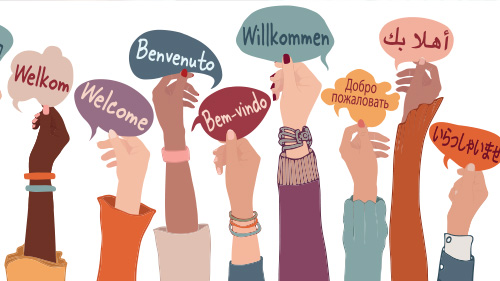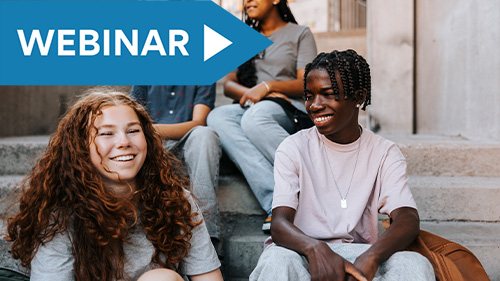Teaching Reading When You're Not a Reading Specialist
This webinar with Dr. Brandon Abdon, author of our AP Language and Composition and AP Literature and Composition AMSCO coursebooks, and guest ELA...
AP & Honors Mathematics
Explore Wiley titles to support both AP and Honors mathematics instruction.
Literacy Skills & Intensive Reading
Connections: Reading – Grades 6–12
Empower student success with a proven intensive reading program that develops strong reading skills in striving readers.
Drama, Speech & Debate
Basic Drama Projects 10th Edition
Build students’ confidence and competence with comprehensive, project-based theatre instruction.
Literature
Connections: Literature
Support learners as they study dynamic, relevant texts and bring the richness of diverse voices to students through literature.
Literature & Thought
Develop critical thinking, reading, and writing across literacy themes, genres, historical eras, and current events.
Language Arts
Vocabu-Lit® – Grades 6–12
Help students build word power using high-quality contemporary and classic literature, nonfiction, essays, and more.
Connections: Writing & Language
Help students develop grammar, usage, mechanics, vocabulary, spelling, and writing and editing skills.
Reading/English Language Arts
Measuring Up to the English Language Arts Standards
Incorporate standards-driven teaching strategies to complement your ELA curriculum.
English Language Learners
Measuring Up for English Language Learners
Incorporate research-based best practices for ELLs with an approach that includes a focus on language acquisition strategies.
Mathematics
Measuring Up to the Mathematics Standards
Incorporate standards-driven teaching strategies to complement your mathematics curriculum.
Foundations
Measuring Up Foundations
Help students master foundational math skills that are critical for students to find academic success.
Science
Measuring Up to the Next Generation Science Standards
Give students comprehensive NGSS coverage while targeting instruction and providing rigorous standards practice.
Assessment
Measuring Up Live
Deliver innovative assessment and practice technology designed to offer data-driven instructional support.
For a better website experience, please confirm you are in:
3 min read
Dr. Almitra Berry Oct 29, 2025 3:17:30 PM

As middle school educators, we know the moment when a learner comes alive in class. Maybe they're debating a character's motivation or crafting a narrative that captures their authentic voice. But too often, I've watched that spark dim when learners believe their language—the way they actually speak—has no place in our classrooms.
Let me be direct: if we're not honoring the ethnolects our learners bring to school, we're missing one of our most powerful teaching tools.
Want to learn more? Watch Dr. Berry's webinar "Beyond Translation - Valuing and Leveraging Ethnolects in the ELA Classroom" now! 👇
An ethnolect is a variety of a language associated with a particular ethnic group. In America’s middle school classrooms, we most commonly encounter African American English (found across the country), Chicano English (primarily in the Southwest and West Coast), and Nuyorican English (rooted in the Northeast)—all three fully developed, rule-governed language systems with their own grammatical structures, pronunciation patterns, and rich expressive traditions.
African American English features unique grammatical patterns like copula absence (she my sister instead of she is my sister), habitual ‘be’ to indicate recurring actions, and distinctive pronunciation features.
Chicano English, influenced by contact between English and Spanish, includes characteristic prosody patterns, th-stopping (where the 'th' sound in 'this' becomes a 'd' sound), and specific intonation rises that carry meaning.
Nuyorican English (also called New York Latino English), which originated with Puerto Ricans in New York City, shares many features with African American English while also incorporating syllable-timed rhythm from Spanish, dental pronunciation of /t/ and /d/ sounds, and unique melodic intonation patterns that distinguish it from both mainstream American English and African American English.
Here's what matters most: these are not "broken English" or "incorrect grammar." They're sophisticated linguistic systems that our learners have mastered. When we treat them as deficits rather than assets, we send a devastating message about who belongs in academic spaces.
Learner engagement hinges on identity affirmation. TESOL standards emphasize honoring learners' home languages and linguistic resources, and this principle extends to ethnolects. Research consistently shows that when learners feel their linguistic identity is under attack, they resist adopting features of School English.
Walk in their shoes for just a moment. If you walked into a classroom speaking the language of your family, your community, your cultural identity—and the teacher immediately marked it as wrong—what has that teacher told you about yourself? About your family? About whether you belong in that space?
The data tells us this matters profoundly. Learners whose linguistic and cultural identities are validated show higher classroom engagement, a stronger sense of belonging, and improved academic outcomes.
Now flip it! When we ignore or stigmatize ethnolects, we create psychological barriers that block learning.
Rather than demanding learners abandon their home language, culturally sustaining pedagogy asks us to expand their linguistic repertoire. This means teaching learners that they possess multiple language varieties—each valuable in different contexts.
Teach code-switching as a strategic skill. In my own classroom and in the thousands of classrooms I've coached across the country over the last twenty-odd years, I've explicitly taught learners and coached educators to analyze when and why authors use different language varieties, explore how characters shift their language based on audience and purpose, and practice moving fluidly between the rich expressiveness of African American, Chicano, or Nuyorican English and the expectations of academic writing.
When we promote multilingualism—honoring both ethnolects and heritage languages—we practice truly asset-based instruction.
Connections: Literature supports this approach by providing diverse, authentic texts that reflect learners' lived experiences. When learners see their language varieties represented in literature, they understand that their voices have always belonged in academic spaces.
Start by expanding your own knowledge. Learn the linguistic features of the ethnolects your learners speak. Recognize patterns like habitual ‘be’ or th-stopping as grammatical structures, not errors.
Create Cultural Bridges that honor learners’ ethnolects as entry points to literary analysis. Help learners understand that all languages naturally vary by region, ethnicity, and context. Frame School English as an additional tool in their communication toolkit, not a replacement for their home language. This approach immediately increases engagement while building sophisticated code-switching skills.
Most importantly, validate learner expression. When a learner uses African American, Chicano, or Nuyorican English in discussion, respond to their ideas—not their grammar. Save language variety instruction for writing workshops where you can teach code-switching and translanguaging as sophisticated skills, not deficits to fix.
This work requires ongoing reflection and community. That's why I'm excited about our upcoming webinar, "Beyond Translation: Valuing and Leveraging Ethnolects in the ELA Classroom." We'll explore specific instructional strategies, examine model lessons from Connections: Literature, and build a community of educators committed to honoring every learner's linguistic gifts.
Because here's the truth I've learned after thirty years in this work: our learners don't have language barriers. They have language abundance.
The question is whether we're ready to see it.
Dr. Almitra L. Berry serves as the content expert for multilingual development in Perfection Learning's Connections: Literature program for middle school. Her latest book, The Culturally Competent Educator, guides educators in implementing equitable practices for diverse learners.

This webinar with Dr. Brandon Abdon, author of our AP Language and Composition and AP Literature and Composition AMSCO coursebooks, and guest ELA...

Join Laura Kebart, CEO of Language Arts Teachers, to discuss strategies for implementing stations in your classroom! During this presentation you'll...

Walk into a middle school classroom during a lively literature circle and you’ll hear questions, laughter, debate, and—most important—learners...

It’s that time! The school year is beginning and you’re ready to welcome up to 180 new learners into your classroom. Whether you’re in your first...

What happens when we stop seeing language diversity as a barrier and start embracing it as our greatest classroom asset?

Join Dr. Almitra Berry (A L Berry Consulting) to learn about intentional text selection for ELA Learners in this informational webinar.

The summer break is winding down, and soon you'll be setting up your classroom for another year of learning adventures. Whether you're a first-year...

Join Laura Kebart (LanguageArtsTeachers.com) for a fun walkthrough of four strategies to keep your middle school ELA students engaged all year long!

Every ELA teacher knows how to do this, right? Not exactly. This webinar invites all ELA teachers for an in-depth examination of the art of close...

Most of the time, grading a stack of essays feels like shoveling a pile of smoke for the weekend. Not only are traditional grading methods...

Transitional literacy focuses on bridging the gap between basic reading skills and more advanced literacy skills necessary for success during middle...

Okay, real talk without judgement: How often do you arrive at school in the morning only to second-guess your Middle School ELA class routines? You...
